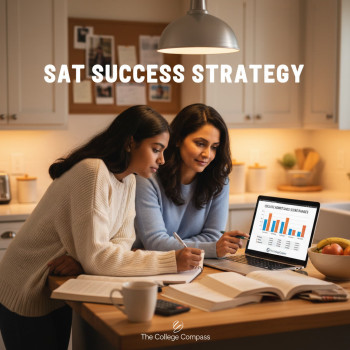Why SAT Scores Matter for Merit Scholarships (and When They Don’t)
Let’s be honest: scholarship hunting can feel like a scavenger hunt with changing rules. But one steady lever families can pull is the SAT. A strong SAT score is a clear, comparable metric that many colleges and private scholarship programs use to award merit-based aid — especially for students who might not qualify for need-based grants. That said, it isn’t the only factor. Schools weigh GPA, course rigor, essays, extracurriculars, and sometimes demonstrated interest.

How Colleges Use SAT Scores for Merit Aid: The Typical Patterns
Different colleges use SAT scores in different ways, but common patterns include:
- Automatic thresholds: Some institutions publish automatic scholarship tiers (e.g., 1400+ = $20,000/year). If you meet the score and GPA criteria, the award is automatic.
- Holistic consideration: At selective schools, admission is holistic and scholarship committees consider SATs alongside the entire application.
- Competitive pools: Some scholarships run competitions where SAT scores are part of a candidate profile used to narrow the pool.
- Program- or department-specific awards: Engineering or STEM scholarships may favor math-heavy SAT performance.
Understanding which pattern a college follows is the first strategic step. If a school posts guaranteed scholarships tied to scores, hitting that score is a power move. If awards are competitive, you’ll need to strengthen other areas too.
Timing Is Everything: When to Test and When to Submit Scores
Timing affects both the number of opportunities you have and how your scores are seen. Here’s a roadmap:
- PSAT (sophomore/junior year): Useful for National Merit and for practice. Strong PSAT performance can open scholarship conversations early.
- Junior year SATs: Aim to achieve your target score by late junior year. That gives you time for a retake if needed and lets you list strong scores on applications submitted in fall of senior year.
- Senior year fall retakes: If you need a bump, use early senior year test dates — but be mindful of scholarship deadlines which sometimes fall well before November.
Pro tip: Many scholarships and colleges consider the highest superscored result. Verify each school’s policy — some schools superscore across test dates and sections; others don’t.
Practical Calendar Example
| Time | Action | Why It Helps |
|---|---|---|
| Junior Fall | Take PSAT; start SAT prep | Qualify for National Merit, begin skill-building |
| Junior Spring | Take SAT; send scores selectively | Baseline score and time for improvement |
| Senior Summer / Early Fall | Retake if needed; finalize college list | Meet scholarship deadlines and automatic thresholds |
Where to Find Merit Scholarships That Use SAT Scores
Scholarships that use SAT scores come from several places:
- Colleges themselves — often the largest source of merit aid; look for published score thresholds.
- National scholarship programs — some explicitly look at test scores as part of eligibility.
- Local organizations and foundations — they sometimes ask for test scores to compare applicants objectively.
- College Board and BigFuture/Student Search-like services — you can opt into finder services that match you with scholarships and colleges that have awarded merit aid to students like you.
Don’t wait to be discovered. Actively search and track deadlines. Many families miss easy money because they didn’t apply or didn’t know a school offered automatic merit awards.

Practical Steps to Maximize SAT-Driven Merit Aid
Here’s a step-by-step playbook you can follow right now:
- Research: Create a spreadsheet of target colleges and their published merit criteria (score thresholds, GPA minimums, deadlines).
- Test smart: One high-quality, well-timed score is better than multiple rushed attempts. Use official practice tests and realistic, timed practice.
- Opt into student search services: Make sure the student signs up for scholarship-matching services offered through college planning platforms.
- Apply widely: Apply to a mix of schools where your score is above the average (high chance of merit aid), near the average (competitive), and safety/match schools where automatic awards might exist.
- Keep grades strong: Colleges often require a GPA minimum alongside SAT cutoffs to qualify for merit awards.
- Polish your application: If awards are competitive, excellent essays and demonstrated impact in activities matter.
Checklist: Before You Submit Scores
- Confirm each college’s score-use policy (superscore? highest section? last test?)
- Know the scholarship deadlines and application requirements
- Decide whether to self-report initial scores or send official score reports at application time
- Make a plan for retakes only if they are likely to move you into a new scholarship tier
How to Read an Award Letter: Know What the Merit Part Means
When your financial aid award letter arrives, the merit scholarship portion is usually clearly labeled. But watch for nuances:
- Renewability: Is the scholarship renewable each year? If yes, check the GPA and credit requirements to maintain it.
- Full vs. partial: Is it a full-tuition award, a fixed dollar amount, or a per-year stipend?
- Stackability: Can you combine merit scholarships with other institutional awards? Some colleges limit stacking.
- Conditional awards: Some scholarships require enrollment in certain majors or participation in programs.
Understanding these details lets you compare offers across schools in apples-to-apples terms.
Real-World Example: Turning Scores into Dollars
Imagine two students, Maya and Jamal. Both have strong records, but their choices and test timing change what they receive:
- Maya scores a 1480 and applies early action to a state university that guarantees $15,000/year for scores above 1450. She accepts and secures $60,000 across four years without extra applications.
- Jamal scores a 1350 but applies to a private college where merit awards are competitive. He submits a compelling essay and a portfolio of community projects and receives a $12,000/year scholarship despite a lower score.
Lesson: High scores can unlock guaranteed money, while strong applications can convert moderate scores into competitive awards.
Using Personalized Tutoring to Improve Scores — When It Makes Sense
Investing in targeted prep can produce returns via scholarship dollars. Consider personalized options when:
- You need a specific score increase to qualify for an automatic scholarship tier.
- Practice tests show uneven section scores; targeted 1-on-1 help can efficiently close gaps.
- Time is limited and you want the most efficient path to improvement.
Sparkl’s personalized tutoring, for example, is tailored for students who need that last push — 1-on-1 guidance, customized study plans, expert tutors who zero in on weaknesses, and AI-driven insights to track progress. If a higher SAT score could mean thousands of dollars in merit aid, a focused tutoring investment often pays for itself.
Common Mistakes Families Make (and How to Avoid Them)
- Assuming test-optional means test-irrelevant: Many schools still use scores for scholarships even if they don’t require them for admission.
- Missing deadlines: Scholarship deadlines are often earlier than general admission deadlines.
- Not verifying renewability: A one-year award is helpful, but multi-year renewable awards matter most for long-term cost.
- Ignoring local opportunities: Community foundations and local businesses often have less competitive scholarships where strong SATs are an advantage.
Comparing Offers: A Simple Way to Decide
When awards come in, parents and students should compare net cost (total cost minus scholarships/grants) and non-monetary fit (program strength, location, outcomes). Use a simple table to compare:
| College | Tuition & Fees (Yr) | Merit Award (Yr) | Other Grants (Yr) | Net Cost (Yr) | Renewable? |
|---|---|---|---|---|---|
| College A | $40,000 | $15,000 | $5,000 | $20,000 | Yes (3.0 GPA) |
| College B | $60,000 | $25,000 | $0 | $35,000 | No (one-year) |
Negotiating and Following Up: Don’t Be Afraid to Ask
If you receive a stronger offer from one college, you can sometimes ask another to match or reconsider their offer. Be polite, specific, and provide documentation (award letters). Admissions and financial aid teams expect questions and, in some cases, can increase institutional offers based on demonstrated need or competing offers.
Final Thoughts: Build a Strategy, Not a One-Off Sprint
SAT scores are a tool — a powerful one — for unlocking merit scholarships, but they’re most effective when used as part of a broader strategy. Start early, research intentionally, time your tests, and build an application that highlights both your academic readiness and the qualities that make you a great student. A personalized path — whether that includes 1-on-1 tutoring, focused practice, or guidance from programs like Sparkl that combine human tutors with data-driven insights — can turn a few months of preparation into tens of thousands of dollars saved over four years.
Action Plan: A One-Page Roadmap for the Next 12 Months
- Month 1: Create your college list and research merit criteria; opt into scholarship search services.
- Months 2–4: Take a diagnostic SAT; set a target score based on scholarship tiers of target colleges.
- Months 5–8: Follow a structured study plan with timed practice tests and targeted review; consider personalized tutoring if you need focused gains.
- Months 9–12: Take the SAT; submit scores strategically; apply to scholarships and meet early deadlines.
One Final Encouragement
Finding and securing merit scholarships is a marathon, not a sprint. Celebrate the small wins — a practice test improvement, a well-crafted essay, an award you didn’t expect — and keep your eye on the long-term prize: a college experience that’s financially manageable and academically rewarding. With planning, smart testing, and the right support, SAT scores can be one of the most reliable levers to reduce college costs.
If you’d like help turning a target score into a scholarship-winning profile, consider seeking personalized support — a tutor who builds a tailored plan, gives focused instruction, and helps track progress. Those investments often unlock far more than test-score gains; they give confidence, routine, and a clear path toward college affordability.














No Comments
Leave a comment Cancel